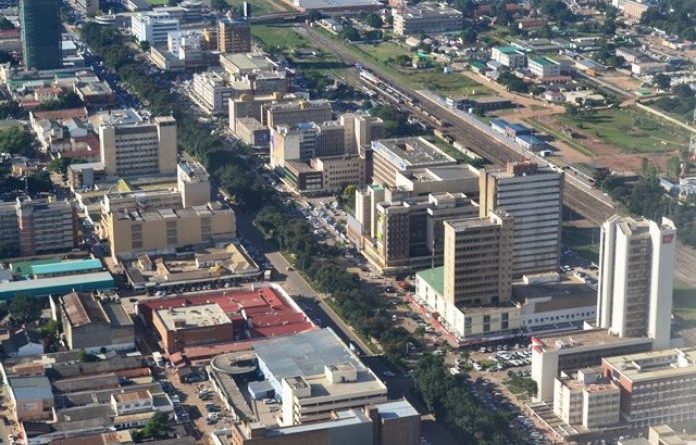Uncovering High-Potential Retail Sites in Zambia
African retailers grapple with a consistent growth challenge: finding sites that maximise potential sales. In most cities, geospatial data on consumers is either unavailable or unrealistically expensive to obtain. And in potential-loaded cities like Lusaka, Zambia, that information can make all the difference between successful initial store placement and expansion, and costly mistakes in locations that can disadvantage an enterprise even before their doors open to customers for the first time.
 With its open trade environment, loosening tax policies, and development plan that encourages investment, Zambia has become an enticing market for business, especially over the past five years. The economically-aggressive country was identified as one of Africa’s Frontier Fifteen Markets (just behind the Power Five Markets of Egypt, Nigeria, South Africa, Morocco and Algeria) in the recently-released Finding the Dynamic African Consumer, a study on Africa’s 330-million-strong Consumer Class. According to the report, Zambia is home to 3.3 million members of the continent’s moneyed middle class, and its capital, Lusaka – previously acknowledged as one of the economically fastest-growing cities in Africa – ranks among Africa’s top Urban 50 Markets.
With its open trade environment, loosening tax policies, and development plan that encourages investment, Zambia has become an enticing market for business, especially over the past five years. The economically-aggressive country was identified as one of Africa’s Frontier Fifteen Markets (just behind the Power Five Markets of Egypt, Nigeria, South Africa, Morocco and Algeria) in the recently-released Finding the Dynamic African Consumer, a study on Africa’s 330-million-strong Consumer Class. According to the report, Zambia is home to 3.3 million members of the continent’s moneyed middle class, and its capital, Lusaka – previously acknowledged as one of the economically fastest-growing cities in Africa – ranks among Africa’s top Urban 50 Markets.
While copper mining and agriculture are Zambia’s traditional economic strengths, moves to diversify the economy, and the growth of the country’s aspirant middle class (clustered in urban centres like Lusaka, Ndola and Kitwe), have resulted in stronger growth for consumer-driven sectors. In 2016, 39% of Zambian household spend went to food and soft drinks, way ahead of second-placed housing and utilities spend (17.9%).
It’s predicted that sales from the retail industry will total $19 billion in Zambia by 2019, making it a prize opportunity for supermarkets and other businesses in the sector. That is, if they can manoeuvre a gap in a highly competitive market already mushrooming in urban areas.
Realising potential through digital solutions
To help businesses identify the most promising expansion areas for retail projects, they require a reliable, cost-effective and fact-based solution that cuts through market assumptions and avoids guesswork. Geospatial data provides the solution, by applying machine learning algorithms to a combination of consumer data sets and satellite imagery – the output provides actionable, accurate insights.
The advantage of this approach is that analysis can be performed on a hyper-local level (down to square-kilometre areas) to illustrate the consumer characteristics of specific neighbourhoods surrounding potential retail locations. Fraym brings together data on factors like family characteristics, spending patterns, asset ownership, media consumption, and more to create customer profiles that pinpoint the best prospective consumers for a particular retailer, as well as optimal areas to market to them.
The map below overlays a hotspot analysis of key consumers with relevant points of interest, like office buildings, to indicate day-time population congregations. The location of competitors can also be mapped to strengthen the siting analysis and minimise competition for the same consumers.

In some scenarios, finding target customers isn’t enough; it’s also critical to confirm the area is accessible to commerce. Using network analysis, it’s possible to calculate custom catchment areas based on estimated drive-times or walk-times. This can be adjusted to ensure the new location meets the required store support ratio.
When entering new markets or expanding existing ones, businesses should be equipped with the best data possible to ensure they are set up for success. In countries like Zambia, and other emergent African markets, this information has traditionally been lacking. Alternatively, it has been restricted to a general macro-level analysis which fails to consider regional differences and the highly variable consumer profiles and behaviours associated with specific areas. Geospatial data solutions fill in the informational gaps, providing big picture and pinpointed assessments simultaneously. Free of blind spots in comprehension, business decision-makers are equipped to act with confidence and set about growing their market share.
——————————————–
Fraym is a geospatial data company that delivers hyper-local insights for 50+ African countries. Their platform helps fast-growing companies, development organisations, and government agencies answer high-priority questions about where to focus and how to reach specific populations. The company’s leadership has focused on the African continent for decades, holding senior positions in The White House, the African Development Bank, the Center for Global Development, and the ONE Campaign. From offices in Lagos, Nigeria, Nairobi, Kenya, and Washington, D.C., Fraym is committed to empowering African businesses and communities through precise, localised data.
Mapping, Geospatial Layering and Road Safety / What is Geospatial layering? https://t.co/jiZadjIO3a #geospatial pic.twitter.com/1Xj55gSvv3
— Arrive Alive (@_ArriveAlive) December 5, 2018




